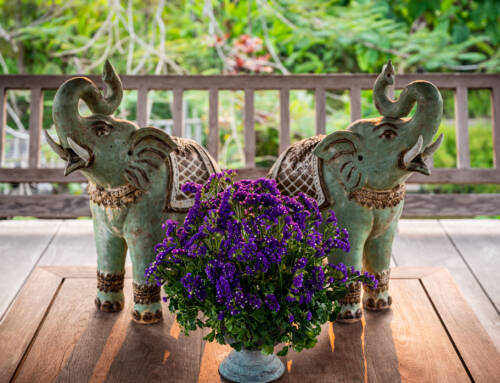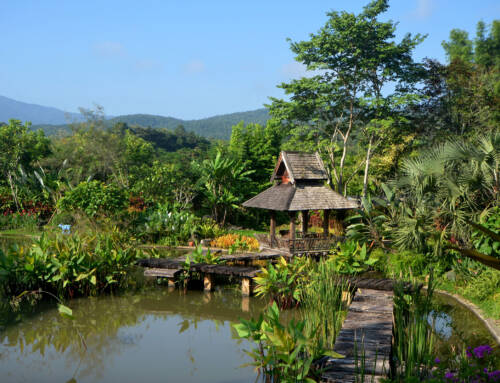7 Tips for Finding an Ethical Elephant Sanctuary in Thailand
Thailand is one of the most popular destinations for elephant sanctuaries. Viewing these majestic, intelligent animals is a once in a lifetime experience. But if you’re not careful you could be promoting ongoing abuse. Instead of completely boycotting elephant tourism, do some research. Supporting ethical elephant sanctuaries leads to the long term well-being of captive elephants. It ensures the continued employment of the mahouts. These are the keepers who have been caring for elephants for millennia. They take great pride in their rich culture of elephant care.
Try to ensure that the camp has been certified by the local government and read on to learn how to find an ethical elephant camp in Thailand!
Elephant Performances
One of the top signs of an unethical elephant sanctuary is when they promote unnatural behavior that leads to physical or mental stress. These include:
- Walking on hind their legs
- Sitting upright
- Riding a bicycle
These activities may seem to be relatively benign. However you must remember that you’re not the only tourist.
These elephants are interacting with people and practicing unnatural behaviors for hours every day. It places enormous mental and physical stress on the elephants.
Some performances can be done properly through positive training techniques. They can provide elephants with necessary exercise and also mental stimulation. They should be used in an educational way instead of a theatrical way. Of course, these performances need to be only a small portion of the elephant’s day.
These can include:
- Strength-based activities: moving logs, lifting keepers
- Agility-based activities: painting, kicking balls
Elephant Training
Phajaan training is a cruel training method to get elephants to obey their keepers. It’s used to break the animal’s spirit.
When the elephants are babies, they are:
- Placed in cramped pens
- Starved of food and water
- Beaten with sharp objects
After weeks of this treatment, the elephant is broken down and easily controlled by keepers out of fear. This has been a training method that’s been traditionally passed down through generations of mahouts.
However, more keepers are beginning to realize that positive reinforcement is an effective training method for elephants and overall better for their well-being. Be sure to ask the elephant sanctuary how they train their elephants.
Captive Elephants
All elephants in the sanctuary should be there because they can’t be returned to the wild. Breeding elephants in captivity isn’t ethical. Currently, no captive elephant offspring has ever been returned to the wild. However captive breeding is common because it’s now illegal to capture wild Asian elephants.
Ensure that the camp has policies that don’t encourage the wild capture of elephants. You also need to make sure that all the elephants are legally registered.
Free Contact
Free contact is the most common way of interacting with elephants. This does not necessarily mean the elephants are being abused. Chains, typically around a male elephant’s ankles, are a simple and safe method to confine elephants. If the chains are used appropriately they don’t harm the animal.
For instance, aggressive male elephants often have chains around their ankles in order to control them in the case of an emergency situation. Elephants can also be tethered with long chains that enable them to interact with other elephants or find space alone.
Chains also allow keepers to change the elephant’s environment in order to give them fresh vegetation to browse. However, elephants should not be kept in chains during the day for long periods of time. The prolonged use of short chains is therefore a concern.
It’s also necessary for keepers to carry bullhooks in free contact situations. The proper use of this tool has been developed over thousands of years. Both elephants and humans can be in danger in emergency situations.
However, bullhooks can be misused or used solely for punishment.
Protected Contact
Zoos and sanctuaries are switching to protected contact. Even with the proper use of bullhooks, elephants can become resentful and afraid of their keepers. This can lead to accidents if an elephant is spooked or aggressive.
Protected contact eliminates the need for bullhooks. Instead, trainers ensure there’s always a barrier between them and the elephant. They use positive reinforcement in order to train them.
This is a safer management style that still allows keepers to provide elephants with enriching experiences.
Socialization
Social bonding and enrichment activities are just as important as an elephant’s enclosure size. Much like humans, elephants have evolved as social animals. It means that solitary confinement or living in isolation is a harsh punishment and impacts on their psychological health.
Elephants need to be able to access other elephants when they desire.
Enclosure Size
Elephants are migratory animals. They are used to traveling over hundreds of acres. In fact, the home range for wild African elephants can extend up to 11,000 square kilometers. Female Asian elephants’ range can extend up to 400 square kilometers. The area is smaller because of the dense foliage they travel through.
With this in mind, the more space a sanctuary is able to provide the better. However elephants are usually provided with enough food and water. This means that they won’t walk around as much because they don’t have to.
Ethical elephant sanctuaries have a large enclosure and give plenty of space for the elephants. Thy ensure that the elephants walk several kilometers a day on soft ground. They can also participate in other physical activities. Movement and exercise helps alleviate boredom and reduces aggression.
Discovering Ethical Elephant Sanctuaries
More and more, people are learning that elephants have complex physical, social, and psychological needs. Although no captive situation is perfect, ethical sanctuaries strive to provide elephants with the best possible conditions.
Find and support ethical elephant sanctuaries instead of boycotting all sanctuaries. in this way you’re giving mahout’s the ability to continue caring for elephants. They can go about their business in the right way while sustaining their culture and way of life. A single elephant consumes 550 pounds of food a day and costs about $18,000 a year to support.
Ready to plan your Chiang Miami vacation in a luxury villa? Book with us today for an all-inclusive, private experience!







